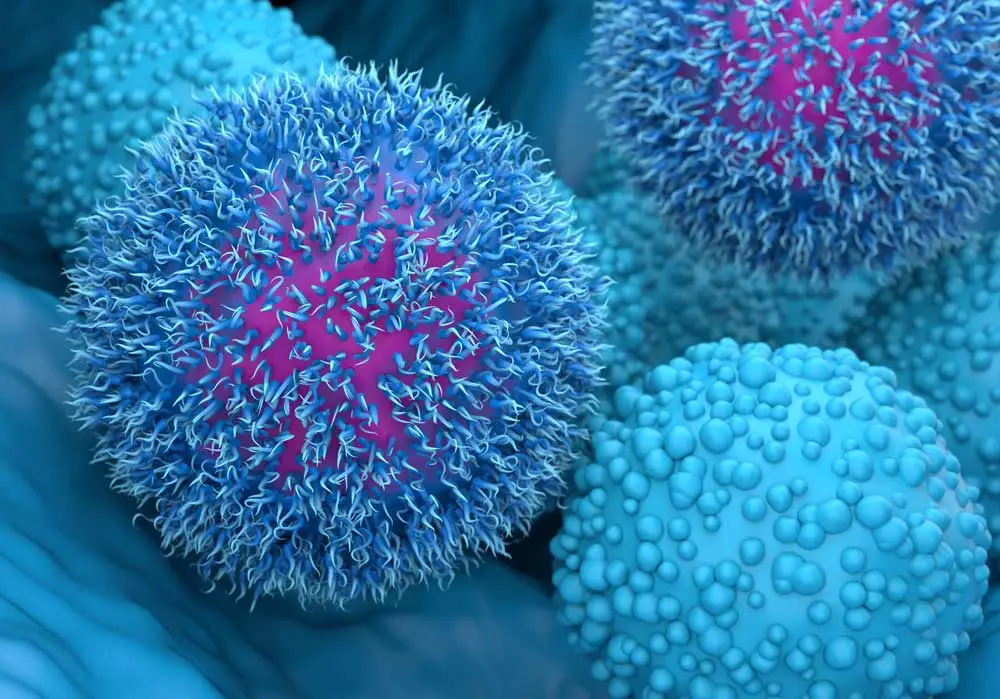
Vector Laboratories is closed for the President’s Day on Monday, February 19th. We will be back in the office on Tuesday, February 20th.
We will respond to emails upon our return. Have a wonderful day.
Menu
Vector Laboratories is closed for the President’s Day on Monday, February 19th. We will be back in the office on Tuesday, February 20th.
We will respond to emails upon our return. Have a wonderful day.


Late diagnosis is a massive setback in cancer treatment, even more so in certain cancer types, such as pancreatic cancer, including the aggressive neoplasia, pancreatic ductal adenocarcinoma (PDAC). With more than half of cases detected only during the metastatic stage, it is no surprise that this cancer has the lowest 5-year survival rate of all cancers (9%) (1).
The absence of distinct early symptoms makes it difficult for early diagnosis. Additionally, the current biomarkers for pancreatic cancer may not necessarily distinguish tumors from healthy tissue, let alone determine tumor progression.
To this day, there is only one FDA-approved biomarker for pancreatic cancer: carbohydrate antigen 19-9 (CA19-9), which is found abundantly in PDAC cells. Another recently discovered marker is the sialylated tumor-related antigen (sTRA).
The problem with these biomarkers is that without extensive knowledge of their glycan epitopes, antibody attachment sites in PDAC cells, becomes very challenging to delineate PDAC from other cancers. CA19-9 is associated with not only other abdominal cancer types but also various other diseases (2). In contrast, sTRA glycan epitope varies between tumor subpopulations (3). All in all, there is a need to correlate specific glycan structures with antigens and generate more multi-layered detection methods.
As is the case in various cancers and malignancies, aberrant glycosylation is the definitive indicator of abnormalities. Preliminary studies found abnormalities in truncated O-glycans in pancreatic cancer (4), but N-glycan distribution and composition were overlooked until recently.
A recent study conducted at the Medical University of South Carolina addressed this issue by mapping out N-glycan profiles of normal pancreas and PDAC in great detail using imaging mass spectrometry (IMS) and immunohistochemistry (IHC) (5). They also correlated different aberrant N-glycan profiles with CA19-9 and sTRA expression to determine the antibody-based tests for these antigens.
The first goal was to elucidate the spatial N-glycan distribution in normal pancreatic tissue via mass spectrometry. According to IMS analysis, one of the main features of pancreatic tissue is the abundance of high-mannose N-glycans in healthy pancreatic tissue and, in patient samples, the healthy tissue adjacent to the tumor. This pattern is the opposite of what has been observed in other cancers, including prostate, ovarian, breast, and colorectal, where the tumor cells are richer in high-mannose structures than the healthy surroundings.
The normal pancreatic tissue also exhibited sulfated and terminally galactosylated biantennary N-glycan structures, contributing to the immune response and insulin-glycogen balance in pancreatic tissue (6,7).
This study is the first of its kind, as it revealed not only N-glycan modifications in pancreatic tumors, but also the localization of the modified glycans to different tumor regions. In particular, the antennae or branching varied across these regions. For example, the necrotic tissue was heterogeneous: comprising biantennary, triantennary, and tetra-antennary structures with no fucosylation or sialylation. In contrast, adenocarcinoma regions mostly have triantennary and tetra-antennary structures containing fucosylated cores, bisecting GlcNAc, and terminal GalNAc residues. In adjacent normal tissue, biantennary structures were the most prevalent.
The sialylation patterns also differed across tumor regions, but they were both correlated with the metastatic behavior of the tumor. While normal tissue had few sialic acid residues, α2,3 sialylation was observed mainly in the tumor core. The less common α2,6 sialylation was more localized to primary adenocarcinoma clusters. The ratio of the two sialylation types varied within the tissue or even within the region, which can be explored further to identify pancreatic cancer subtypes.
Uncovering the relationship between the biomarkers (CA19-9 and sTRA) and N-glycan structures could open new avenues for the accurate evaluation of PDAC tumor tissue.
With that in mind, the study combined IMS with IHC to reveal N-glycan structures co-localizing with the biomarkers.
The researchers first classified the tumor core into four groups: those with high expression of both biomarkers, CA-19-9 only, sTRA only, and those with low expressions of both.
The heat maps they generated from tumor cores revealed significant differences between the four groups. The N-glycans colocalizing with CA19-9 had a variety of antennary structures, all with bisecting GlcNAc and fucosylated residues. However, the tumor cores abundant in sTRA mostly lacked biantennary structures and outer arm fucosylation.
To address this question, the researchers combined existing carbohydrate antigen data with the glycan data they generated. They were able to form clusters of healthy and cancerous cores with distinct glycan profiles, where different glycan masses indicated tumor-specific glycan properties.
When they compared the predictive values of current biomarkers and N-glycan mass analysis, the predictive value of the combined method was significantly higher than that of the biomarkers alone and moderately higher than the N-glycan masses alone.
How did this translate to tumor detection accuracy? With the addition of glycan masses to biomarkers, the researchers were able to identify tumor cores that biomarkers alone failed to detect. They could also correctly identify healthy cores, which the biomarkers falsely identified as tumors.
That said, there were instances where they falsely identified tumor cores that were, in fact, normal. This discrepancy suggests that there is more to glycan mass and tumor differentiation due to the complexity of N-glycan structures in biomarkers.
Regarding the false positives, the researchers hypothesized that there were mass isomers between normal pancreas and PDAC cores. To discern between these isomers, they used lectin immunofluorescence (IF) staining. In particular, the mass abundances of bisecting GlcNAc and terminal GalNAc would improve the accuracy in PDAC tumor classification, so the researchers used lectins PHA-E (Phaseolus Vulgaris Erythroagglutinin) and GSL-II (Griffonia (Bandeiraea) Simpllicifolia Lectin II) to detect these two structures, respectively.
The IF analysis of the tissues from the previous section revealed a perplexing relationship between lectin binding of the two glycan motifs, glycan mass abundance, and biomarker detection.
In false-positive tissues with high glycan mass, lectin binding was weak, meaning that bisecting GlcNAc and terminal GalNAc levels were low. On the other hand, some tumor cores correctly identified with glycan mass analysis and biomarkers actually had, low biomarker expression. Some tumor regions had small tumor-associated glycan masses but high lectin staining, indicating high bisecting GlcNAc and terminal GalNAc expression.
The findings of lectin staining could elucidate poor detection accuracy in pancreatic cancer. If a tumor tissue has a low expression of FDA-approved biomarkers, the antibodies for those biomarkers are less likely to detect tumors, despite the tumor-associated N-glycan motifs. That’s why incorporating IMS glycan analysis into biomarker-based studies could improve not only the discernment between normal vs. tumor tissue but also tumor classification. IHC and IF could provide an even more comprehensive picture of the correlation between N-glycan distribution and available biomarkers.
That said, there is still room for exploration since there is an immense level of variety in N-glycome across PDAC tumors and tumor regions. For example, the results from the study included tissue samples with high glycan mass but low lectin staining. In other words, these tumor tissues probably contain N-glycan mass isomers with modified binding motifs which could not be detected in the initial lectin staining attempts.
With the improvements in IMS, IHC, and IF instruments, the library of known N-glycans (especially those with high masses) and their mass isomers can be broadened. These improvements could result in the use of other lectins to detect structures that do not contain the common binding motifs. Eventually, this will allow a higher confidence level when classifying PDAC tumors and assessing their progression.
References





Stay in the Loop. Join Our Online Community
Together we breakthroughTM

©Vector Laboratories, Inc. 2024 All Rights Reserved.